Potted perennial flowers are perfect for people who don’t have much space or don’t want to spend time maintaining a garden. Containers also mean having more plants to choose from. When you use containers, you’ll instantly have the option to start growing things that the soil around your home might not support. Is clay soil holding you back? Not anymore, because you can quickly grow perennials that prefer lighter soil in containers. Or you can grow acid-loving perennials, even if you have alkaline soil. There are so many choices! What are the best potted perennial flowers? Read on to find out.
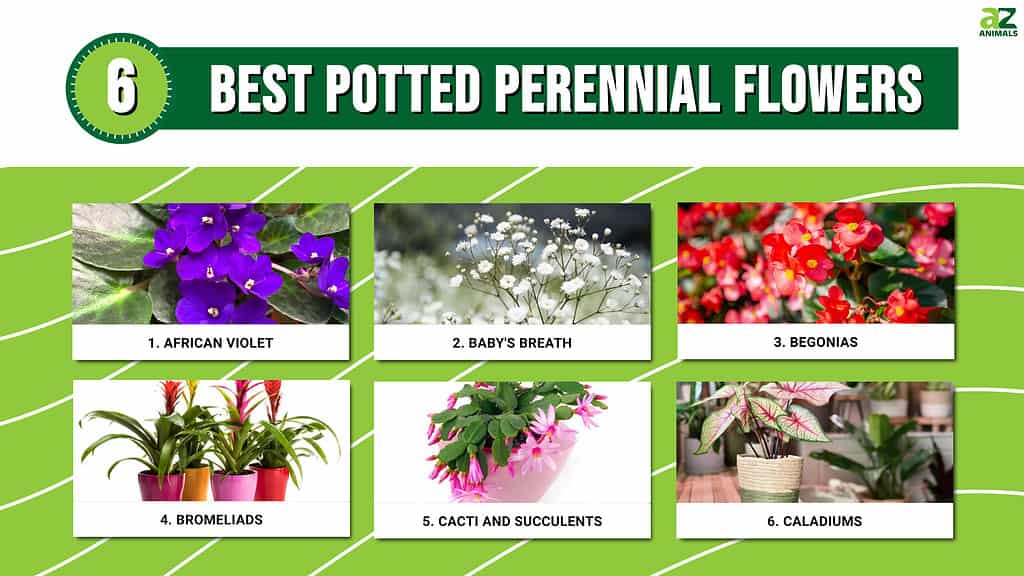
1. African Violet
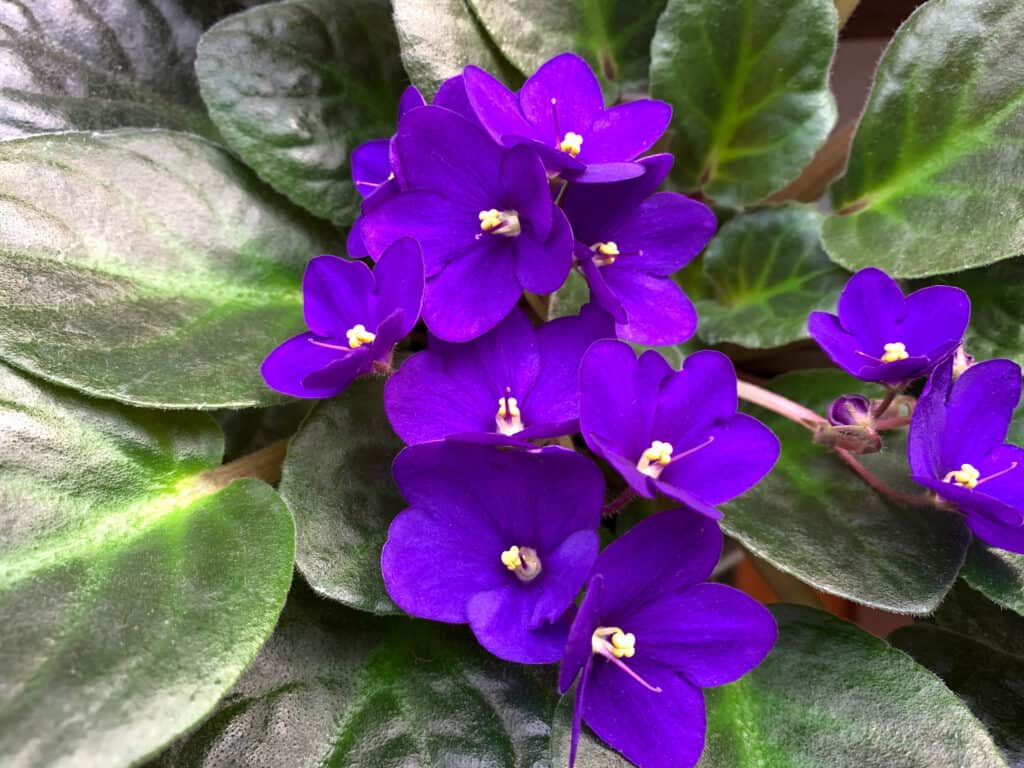
African violets are usually a deep stunning purple color
©Lapa Smile/Shutterstock.com
African violets are beautiful perennials that can brighten up any indoor space. While they are relatively easy to care for, a few things to keep in mind if you want your violets to thrive. First, African violets prefer indirect sunlight, so place them near a window where they will receive some light without being in direct sunlight.
Second, African violets like to be kept moist but not wet, so water them regularly and be sure to empty any drainage saucers so that the roots don’t become waterlogged. Finally, fertilize your violets every month or so using a fertilizer designed for blooming plants. With a little TLC, you can enjoy these beautiful flowers yearly.
2. Baby’s Breath

With delicate stems and small flowers, baby’s breath is a stunning yet understated plant.
©iStock.com/liuyushan
Baby’s breath is a delicate, soft-stemmed plant that produces an abundance of small, white flowers. It is popular for wedding bouquets and other floral arrangements, but baby’s breath can also be grown in the home garden.
Baby’s breath prefers full sun and well-drained soil. If your garden is on the shady side, this plant may not bloom as profusely. Prepare to water these flowers regularly; baby’s breath is not particularly drought-tolerant. But don’t overdo it as the soil should be moist but not soggy.
An excellent all-purpose fertilizer will provide the nutrients baby’s breath needs to thrive. Apply the fertilizer according to the manufacturer’s directions. To encourage bushy growth, pinch back the stems of the baby’s breath when they are six to eight inches tall. Pinching back also promotes more flower production.
3. Begonias
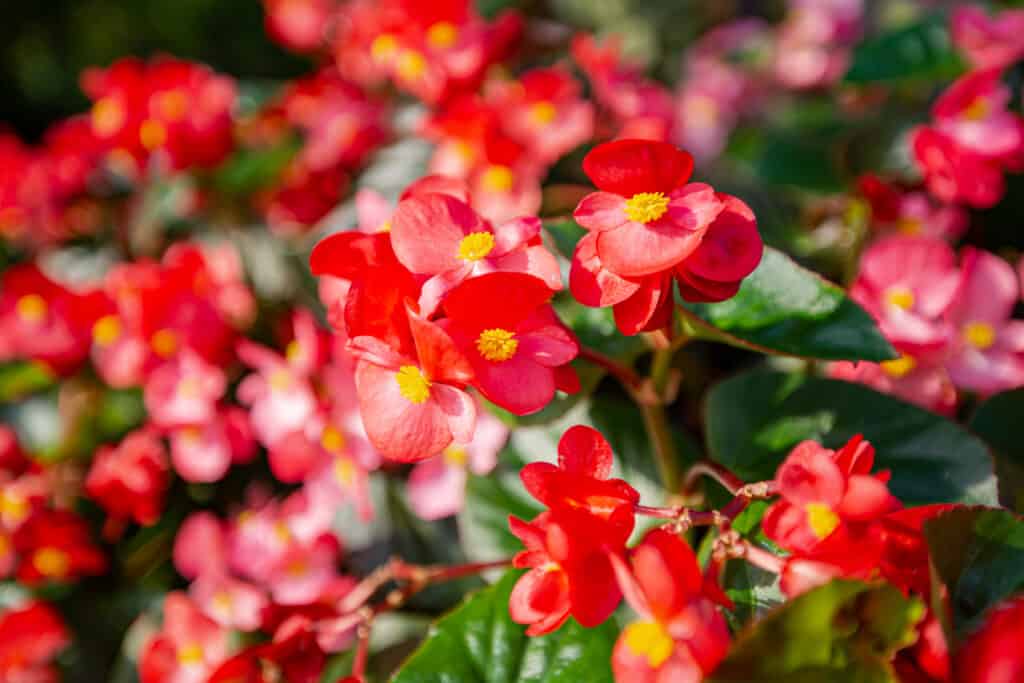
One of the most popular plants is the begonia which can be a variety of different sizes and colors
©iStock.com/deaw59
Begonias are one of the most popular houseplants, and it’s easy to see why. They come in a wide range of colors and sizes, and they’re relatively easy to care for. Begonia plants prefer bright, indirect sunlight. If you can provide them with a few hours of morning or afternoon sun, that’s ideal. Be sure to use a potting mix that contains peat moss or perlite to help with drainage. Be aware that begonias are sensitive to fluctuating temperatures, so it’s important to keep them away from drafts. Lastly, begonias like to be kept moist but not soggy. Water them when the top inch of the soil feels dry to the touch. By following these simple tips, you’ll be well on your way to growing healthy begonias.
4. Bromeliads

Bromeliads are a low-maintenance houseplant which comes in a variety of colors
©Oliver Hoffman/Shutterstock.com
If you’re looking for a beautiful and low-maintenance house plant, you can’t go wrong with a bromeliad. These intriguing plants come in various colors and shapes and can thrive indoors with minimal care. Bromeliads are native to tropical regions, so they love warm, humid conditions. However, they are also very tolerant of dry air, making them ideal for homes and offices. One of the best things about bromeliads is that they don’t require much fertilizer. Over-fertilizing can be harmful to these plants. They also don’t need much water; once a week should be sufficient. And, unlike many other house plants, bromeliads don’t need to be repotted frequently. With just a little TLC, a bromeliad can make a stunning addition to your indoor space.
5. Cacti and Succulents
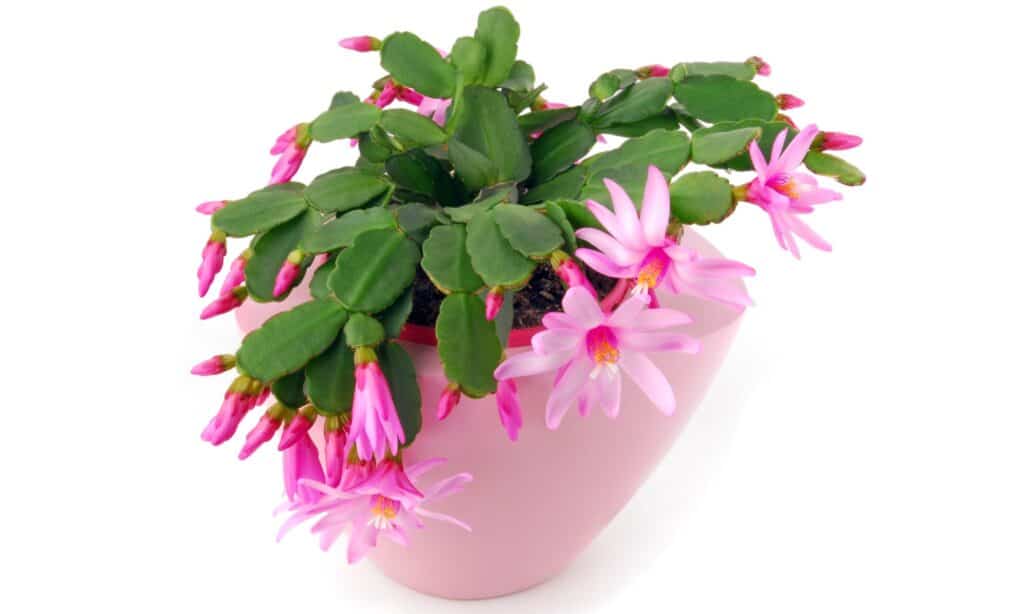
Easter cacti have star shaped flowers.
©iStock.com/severija
Cacti are perennial plants because they can live for more than two years. They have special adaptations that allow them to store water in their stems, which helps them survive in dry climates. Cacti come in many different shapes and sizes, and they can be found all over the world.
Cacti and succulents are two groups of plants that often get lumped together, but they are actually quite different. Cacti are native to the Americas and tend to have thick, fleshy stems that store water. Succulents also have water-storing tissue, come from various geographic regions, and include many different plant families. They also come in a huge variety of shapes and sizes. Whether you’re looking for a low-growing ground cover or a tall focal point for your garden, you’re sure to find a succulent that’s just right for you.
6. Caladiums
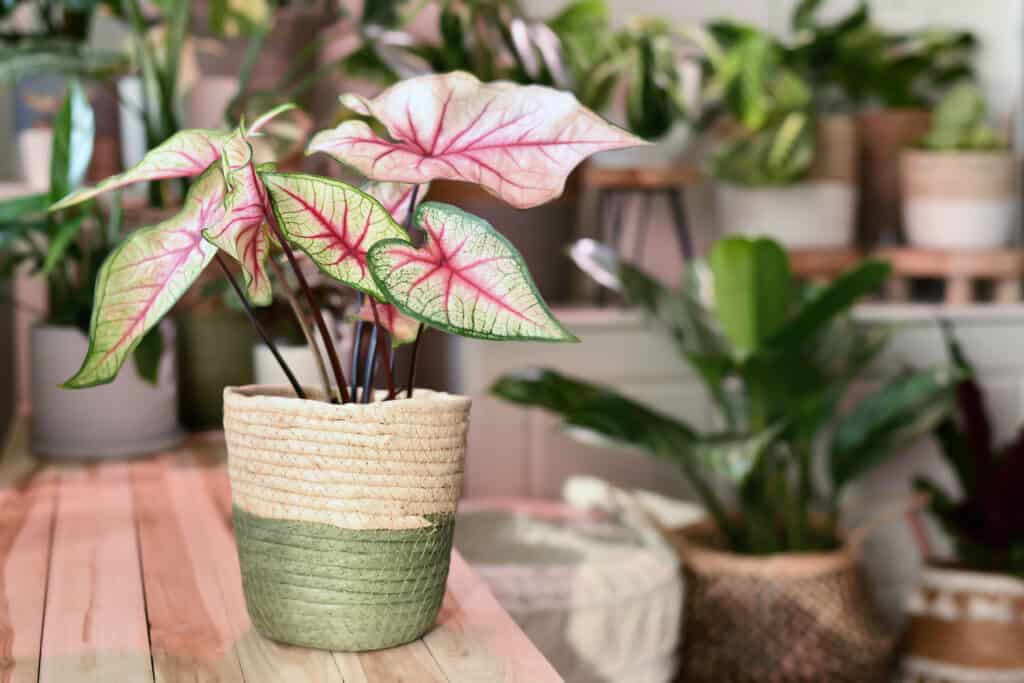
Caladiums are easy to care for and are suitable as potted houseplants
©Firn/Shutterstock.com
If you’re looking for a beautiful and easy-to-care-for houseplant, consider caladiums. Also known as elephant ears, these tropical potted perennial flowers are native to South and Central America. Caladiums grow very excellently in pots and planters — especially hanging baskets.
Caladiums come in a wide range of colors and patterns, and they’re perfect for adding a touch of whimsy to any indoor space. They’re also relatively low-maintenance plants. If you’re looking for a plant that will add some personality to your home without taking up a lot of your time, caladiums are worth considering.
Summary of 6 Best Potted Perennial Flowers
Here is a list of 6 best potted perennial flowers:
| Rank | Flower | Growing Conditions | Maintenance |
|---|---|---|---|
| 1 | African Violet | Prefer indirect sunlight | Keep soil moist but not wet and fertilize every month |
| 2 | Baby’s Breath | Full sun and well-drained soil | Water regularly and use an all-purpose fertilizer |
| 3 | Begonias | Bright, indirect sunlight | Keep away from drafts and water when top inch of soil is dry to the touch |
| 4 | Bromeliads | Warm, humid conditions; very tolerant of dry air | Over-fertilizing can be harmful. Water once a week. |
| 5 | Cacti and Succulents | Can survive in dry climates | Low-maintenance and store water in their stems |
| 6 | Caladiums | Grow well in hanging baskets | Easy to care for |
The photo featured at the top of this post is © Oliver Hoffman/Shutterstock.com
Sources
- , Available here: https://sfyl.ifas.ufl.edu/sarasota-docs/hortres/GrowtoLearnSchoolGardeningGuide.pdf
- , Available here: https://extension.uga.edu/publications/detail.html?number=B1424&title=landscape-basics-success-with-herbaceous-perennials
- , Available here: https://extensionpublications.unl.edu/assets/pdf/g2205.pdf
Thank you for reading! Have some feedback for us? Contact the AZ Animals editorial team.







